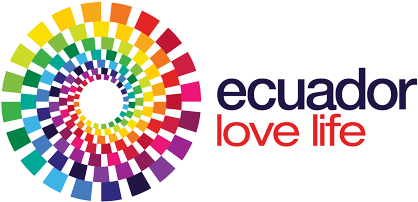Must Sees in the City
Places you cannot miss in Quito
Quito, Ecuador’s capital, is a charming city located in the middle of the world that offers the tourist a wide and varied option of places to visit and activities to do. From the historical center, with its churches and colonial plazas, to the Middle of the World or activities outdoors in the city’s surrounding areas, Quito satisfies the needs and tastes of all its visitors.
The Historic Downtown area was declared the First World Heritage Site in 1978 by UNESCO. The Historic downtown area is not a large museum; it is dynamic, a living place where the daily life of its inhabitants, merchants, clergymen, tourists, government officials, and more get together. .
The Street of the 7 Crosses
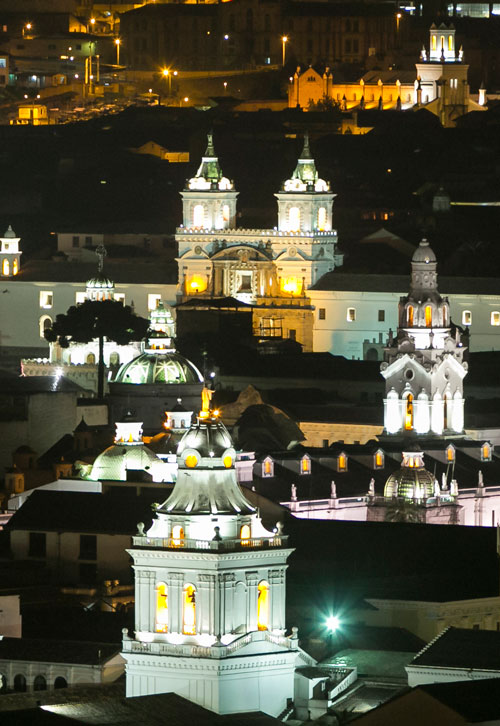
The Street of the Seven Crosses runs through the Historic Center. The tour begins at the Basilica del Voto Nacional, Gothic church that took over 100 years to be completely built and that is the northern boundary of the colonial town. One of the most important viewpoints of Quito is seen from the towers.
Walking down the García Moreno Street involves getting to know the seven churches located on this street; you can stop to visit most relevant sites like the Carondelet Palace, where the President of the Republic works, the Metropolitan Cultural Center, the Cathedral of Quito, El Sagrario Church, La Compañía –the Church of the Society of Jesus, the House of Ma Augusta Urrutia Museum, the El Carmen Alto Museum, and the City Museum.
After crossing the 24 de Mayo Boulevard, some steps lead to the path to the top of the El Panecillo Hill, the southern boundary of historic Quito, where a 30 meters (90 feet) high reproduction in aluminum of the Virgin of Quito stands, placed there in 1955. The original sculpture is 30cm (0.98ft) tall and was carved by Bernardo de Legarda in the seventeenth century; it corresponds to the Quito School and it is the only Virgin represented with wings.
The Picturesque Neighborhood of San Marcos
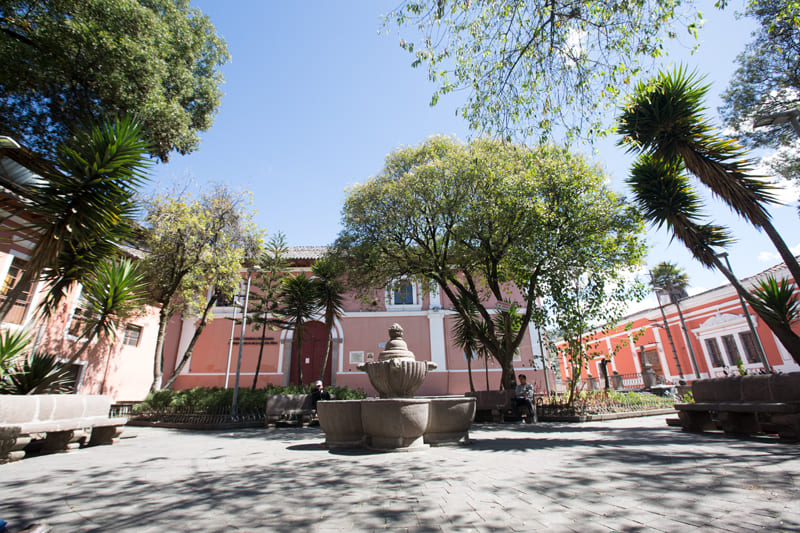
Hides secrets along the Junín Street; one of the most important is the Muñoz-Nariño Watercolor and Drawing Museum, open Tuesday to Friday from 09:00 to 17:00, Saturdays, Sundays and holidays from 09:00 to 13:30. Free admission.
Pause for a few minutes to look at the life in the neighborhood square; next to the church there is a unique moment of the life of the capital city.
Plaza, Church & Convent San Francisco
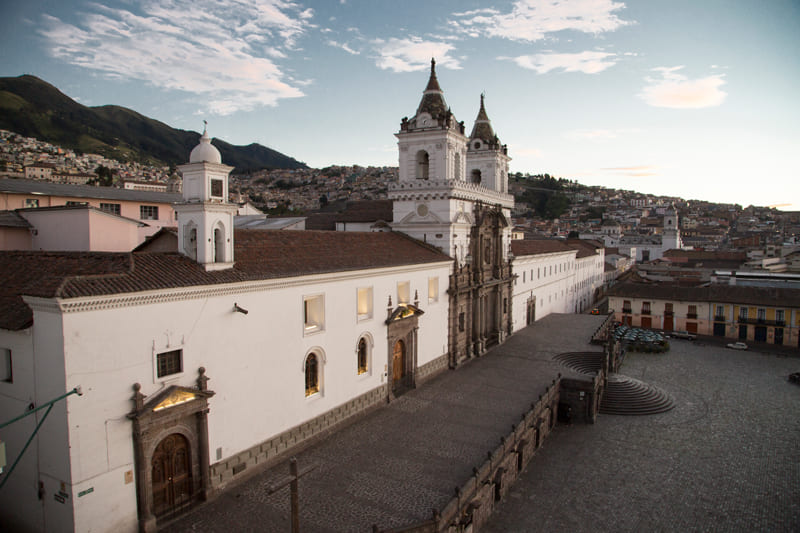
It is the most open site of the colonial town and represents the icon of the city. This religious order was the first to reach the city with the arrival of the Spaniards and it built the imposing church and convent on the ruins of an Inca temple, as a form of submitting the local people.
Part of the complex of the Franciscans is the Colonial Art Museum which houses more than 4,000 objects among which one finds sculptures, paintings and furniture. It is open Monday to Saturday from 09:00 to 17:30. Sundays from 09:00 to 13:00. Cost: USD $2 and access to the church is free.
Compañía de Jesús Church
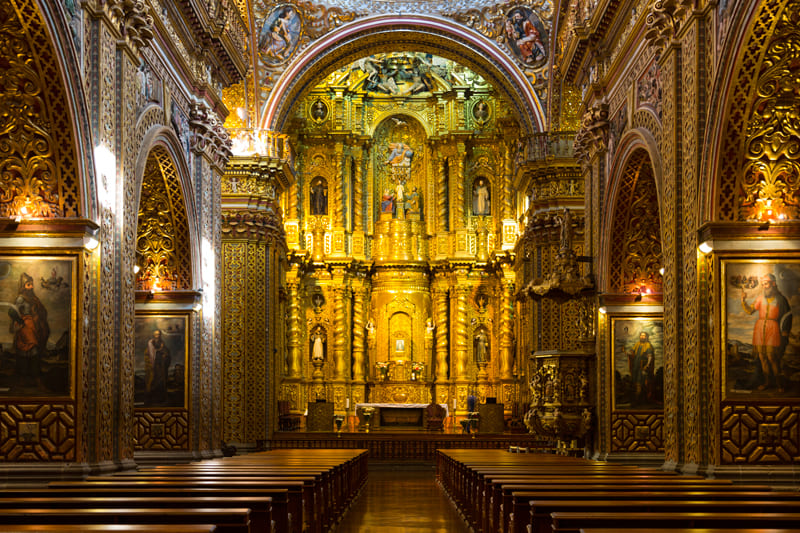
It was the last religious order to arrive in Quito and has influenced the Catholic and academic history of the country. If there is a church that represents the strength of Baroque religious work in gold leaf is this, a jewel of Catholicism in the history of Quito, with a façade carved in stone.
Its construction began in 1605 and ended in 1765. It is open to the public Monday through Thursday from 9:30 to 18:30, Fridays from 09:30 to 17:30, Saturdays, Sundays and holidays from 09:30 to 16:15. Cost: USD $4 and USD $2.
Rocafuerte Street
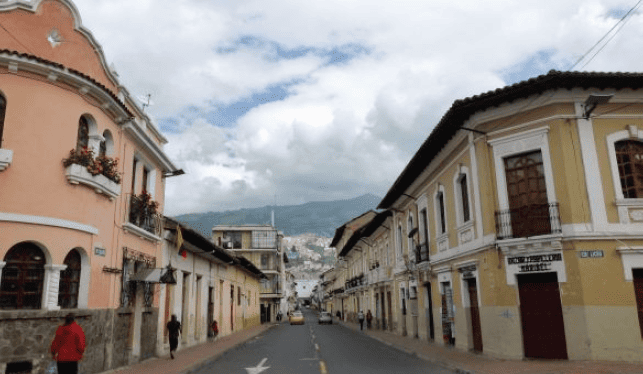
From the Arco de la Reina (García Moreno Street) to the market in San Francisco, the walk starts with a journey of smells and crafts.
In this tour, almost every corner is full of goodies: pralines, roasted sweet corn, roasted salty corn, sugar coated peanuts and traditional religious dress shops for saints, virgins and angels, hat shops and others with traditional trades opened to visitors wishing to get to know about their work, where buying their products is not a requirement to enjoy learning about these rich traditions.
Museo de la Ciudad (City Museum)
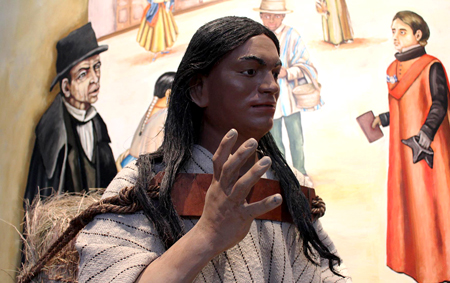
The City Museum traces the history from Quito to Ecuador, with permanent and temporary exhibitions showing the construction of the Ecuadorian State inside the Old San Juan de Dios Hospital.
Open Tuesday to Sunday from 9:30 to 17:30 (the last group enters at 16:30). Cost USD $4, USD $3, USD $1. Free admission for children under 11.
La Ronda
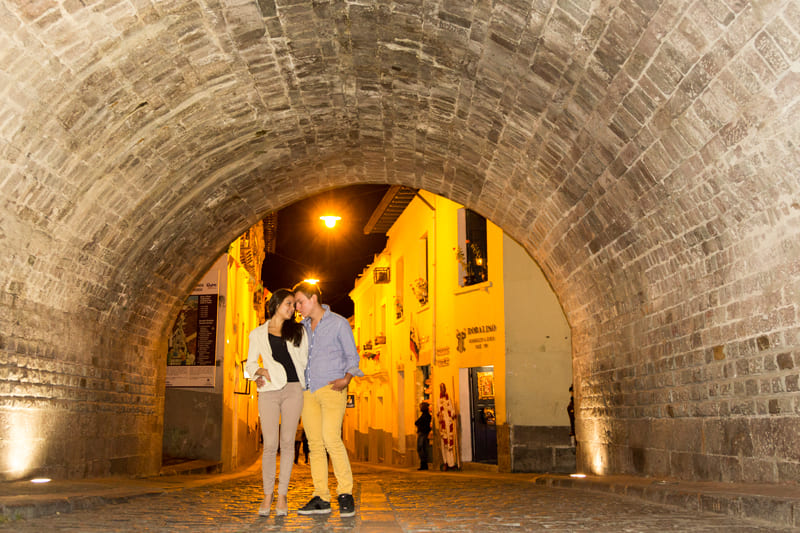
A traditional downtown neighborhood featuring art, crafts, cuisine and nightlife. To visit each of its homes is to discover a universe of stories: from neighbors offering traditional food to visitors, to hotels and restaurants, to shops and galleries.
Night at La Ronda shows another side of the city: it invites one to drink a typical canelazo (sweet drink with cinnamon, naranjilla, and rum), which turns on the mood of the Quito feast.
Since colonial times, Quito has been an important cultural and artistic center. This is something that has been preserved over time; the work related to religious and monastic life are still valid; its air is breathed between the stones and hallways zaguanes of the narrow streets of the historic center.
Religious stores, nuns, priests, and neighbors, along with officials who work daily in the colonial zone are involved in a dynamic that show a traditional lively city that has different and attractive sides to locals and foreigners.
San Roque Roads
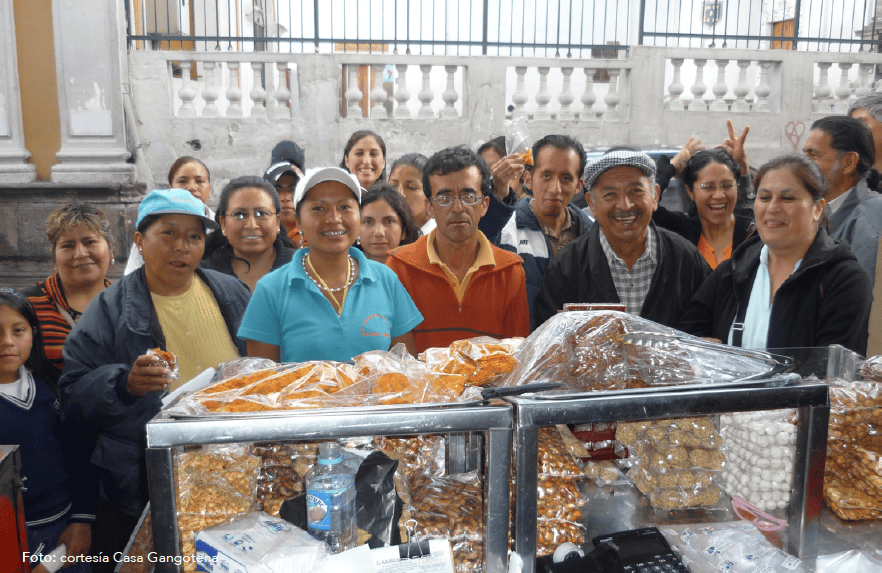
It is an educational and touristic community project managed by the San Roque Guardians of Heritage Neighborhood Association, which aims to disseminate the trades, businesses and lives of the neighborhood artisans and merchants, supported by the Gescultura Foundation and in close relationship with the Gangotena House and the House del Alabado Museum.
There are two routes one can choose to visit the district of San Roque: the Road to the Market, where the smell of spices and the flavor of medicinal waters will lead you to imagine and live the daily life of the first Quito market: San Francisco Santa Clara Sur. And today, the Road mixes testimony and the value of community service organization that shows the validity of craftsmanship and outstanding trades, essential part of the Cultural Heritage of Quito.
For each tour you must bring: Clothes and walking shoes Camera
The tour includes: A community host Visit to local workshops and a trade show. Tastings neighborhood products
It does not include: Personal expenses Transportation and food
Detailed information on: www.caminosdesanroque.com
La Capilla del Hombre
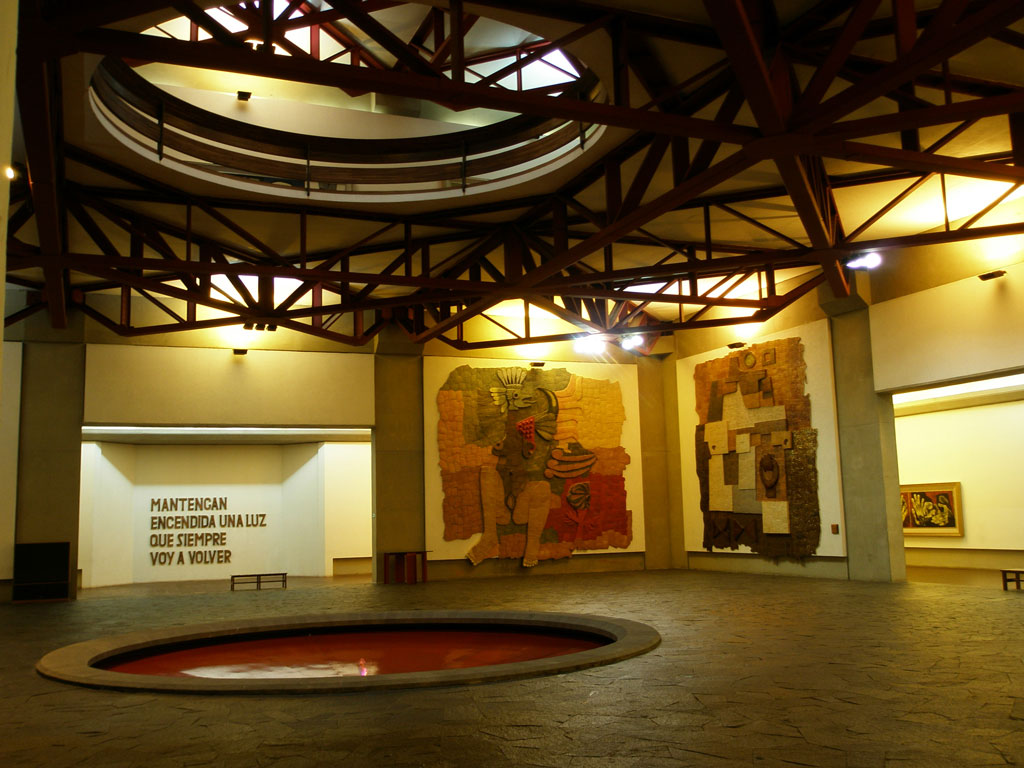
Museum and gallery of the greatest Ecuadorian painter who transcended borders with his art. It is a project managed by the Guayasamín Foundation, already considered in 1985 as a place where you can enjoy the legacy Guayasamín left to Ecuador, composed of his most important paintings: the Age of Wrath, with over 150 paintings. And also 50 retrospective works, collections of archaeological, colonial and contemporary art.
The Chapel next to the house-museum are a must for anyone interested in exploring the art and history of a town built of mestizaje, rootedness, identity and struggle in its social processes through the works that that can be admired in this sanctuary of this painter, pinnacle of the artistic heritage of Ecuador.
Schedule:
Open Tuesday to Sunday from 10:00 to 17:00 Closed on Mondays and holidays.
Cost: USD $6; students, seniors and disabled half price, and free of charge for children under 12. Sundays free to the public.
Detailed information on: www.capilladelhombre.com
A city of colors
The party heats up in Quito
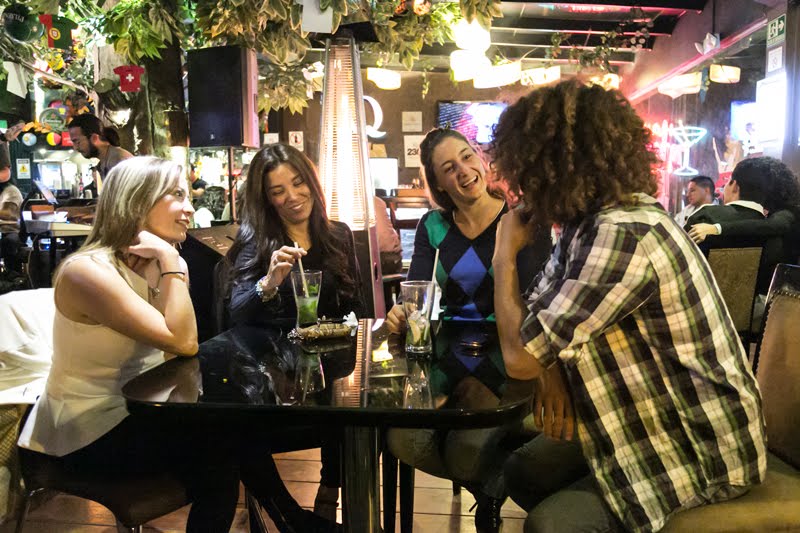
This was a residential neighborhood in the 60s and in recent years it transformed its landscape to become the modern tourist center in the city: hostels, restaurants, bars and travel agencies have been installed in colorful streets, like the Juan Rodríguez, Mariscal Foch, Reina Victoria and Juan Leon Mera.
This is the meeting point to enjoy the Quito nights and to experience an outdoors adventure. There is tourist information and a municipal administration office specifically dedicated to this part of town.
If planning on staying in the Mariscal, you are in a perfect point to reach the modern area where the commercial movement of the city takes place, or go further north and find malls and shopping centers. One can also go to places like the Equator, Otavalo and Mindo and it is also possible to walk to the colonial town from there.
La Floresta Neighborhood
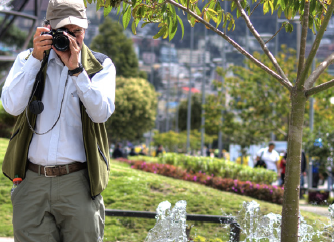
It is a neighborhood that borders the university area of Quito. Its inhabitants give a different dynamic to the area, which also has a varied cuisine. It is a place where people walk their daily routines.
Here are also places of interest like the Ochoymedio, arthouse cinema, referent to a critical and innovative vision of the visual and performing arts in the city.
Modern Quito

The city has many faces: athletes invade urban metropolitan parks early in the morning and within hours they prepare for their hectic daily life. Places like the Carolina Park, the Guagüiltagua Metropolitan and the Bicentennial Park (old airport) or the Chaquiñán in the Valley of Tumbaco show an active and healthy city.
Spaces such as the United Nations Boulevard in the north of the city have changed the interaction of pedestrians and cyclists with the presence of exhibitions and new characters. Near this site is the Botanical Garden which offers an excellent way to discover where the original flora of the place where the city was built: straw, paper trees, chuquiraguas, sigses and orchids in the middle of streets and buildings, at the heart of modern Quito.
OUTDOOR ACTIVITIES
Bike Routes
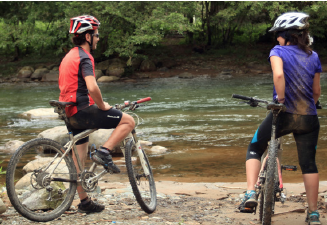
Because of its slopes and canyons, the city and its surroundings are ideal to practice mountain biking. The Quinde Eco route is the old road to the north-west side of the city; it is ideal for exploring the many and the surrounding country life close to the city. It descends from the massif of the Pichincha on its north side towards the cloud forest into sites with elevations ranging from 3,200m (10499ft) to 1,500m (4921.3ft).
The Chaquiñán, which in Quichua means path or road, is another popular choice for touring the Tumbaco Valley. It crosses the old rail station that connected Quito to the northern part of the country and you can reach Puembo on bike
Moors near Quito
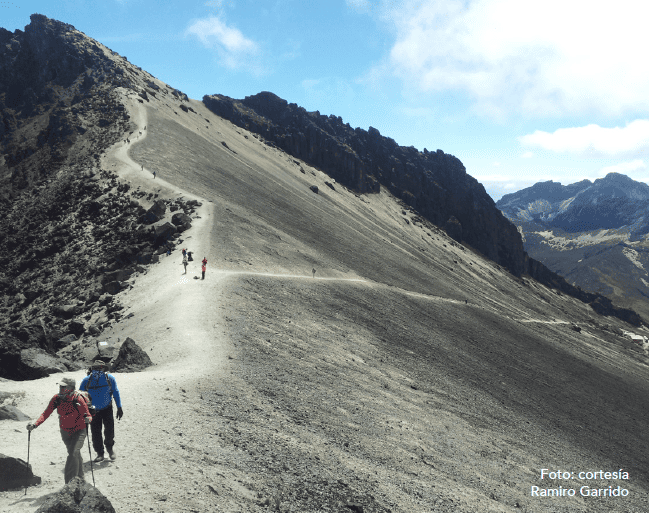
The highlands offer enchanted places to enjoy in the altitude. It is essential to be physically prepared for it and with the right equipment.
The nearest road is to the two Pichincha Mountains, which can start in the cable car of Quito or in the Lloa Parish. From Cruzloma you walk by a marked trail that does not involve any difficulty to the base of the Rucu Pichincha, with an altitude of 4,690m (15387ft). The total distance is 7 miles in about 4 hours. In the Guagua Pichincha you can reach the crater rim, cross the Rucu and reach Cruzloma, a journey that requires some fitness and knowledge of the area. You should go with a certified guide. This route is 14 miles and takes around 7 hours.
From Quito there are important destinations for adventure and outdoor recreation such as the moors and surrounding volcanoes: the Antisana and La Mica Lagoon, the Pita River Canyon, the Molinuco Waterfall, the Cotopaxi National Park, the Pasochoa Protective Forest, the Recreational Area in El Boliche, the Cayambe Coca National Park, the Oyacachi – Papallacta Route, the Ilaló Volcano with its spas, and the traditional craftsmanship in Guangopolo, among others. All less than two hours away from Quito.
Cloud Forest
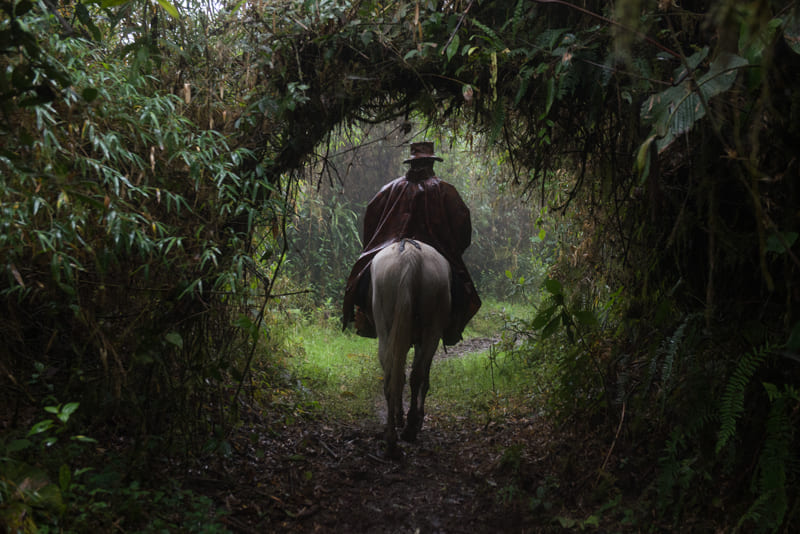
Hummingbirds & Orchids
Volcanoes are the limit of the Highlands: From Pululahua, where there are hiking trails, horseback riding and biking, the ecosystem changes and continually diversifies the flora and fauna. To the north-west of the city there are several Reserves as the Maquipucuna, Pahuma, Mashpi and Yanacocha where the cloud forest is located.
Their main attraction is bird watching, birds and orchids -it is a destination for birdwatchers and naturalist. One of the ideal areas for this activity is Bellavista, located an hour and a half from the city. In several of its tours, especially in the early morning tours, one can observe different types of hummingbirds, toucans and more than 330 species of birds and animals in the area.
The climate is temperate in the area and at night the temperature drops. Bring sunscreen, insect repellent, sunglasses and sun hat.
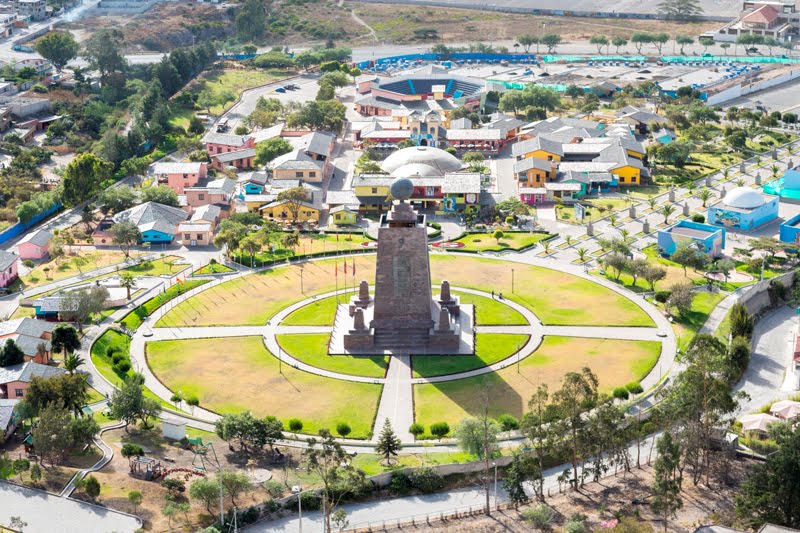
The line that gave the name to the country
The line connecting the Northern and Southern hemispheres gets a broader meaning when talking about a mega-diverse country that loves life and is strengthened in cultural and ancient knowledge.
Scientifically, the Geodesic Mission determined the exact division of the planet and its form, but before the arrival of Spanish and the Incas, who barely occupied the territory for 50 years, the native inhabitants of Quito and the surrounding area already knew that the search for the earth without shadow was of their benefit.
Recommendations to visit this place: the time to get there takes an hour; in the morning it can be sunny, in the evenings the temperature drops so bring a jacket. The ideal time to visit is in the morning or for a whole day.
RASTROS DE VIDA EN UNA CIUDAD MILENARIA
Tulipe & Yumbo culture
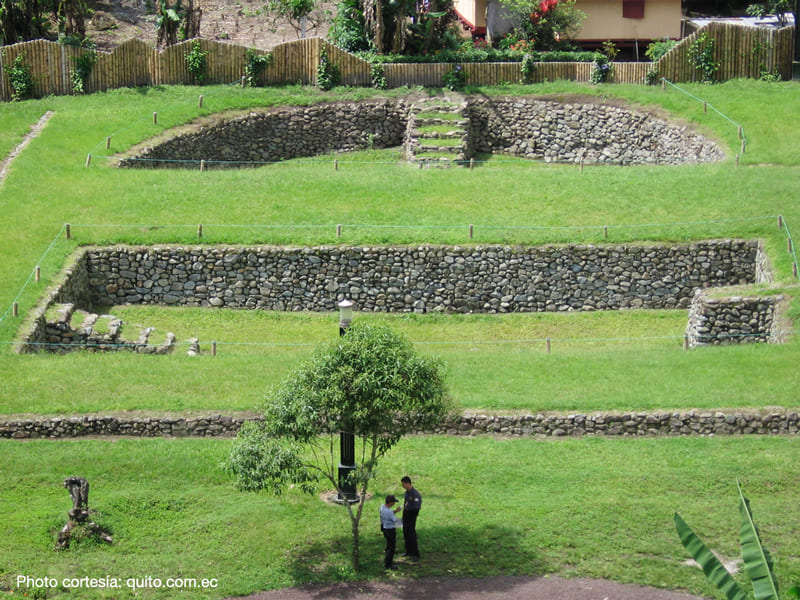
Show the wealth and how man in the past took advantage of a particularly privileged site with natural resources. Through the construction of pools, they developed a lifestyle, an authentic cosmos vision. It has been found that the Yumbos had contact with other nearby towns.
The museum site is located in the area of cloud forest at lower altitudes and with a warmer climate than the climate of the capital.
Sitio La Florida Museum
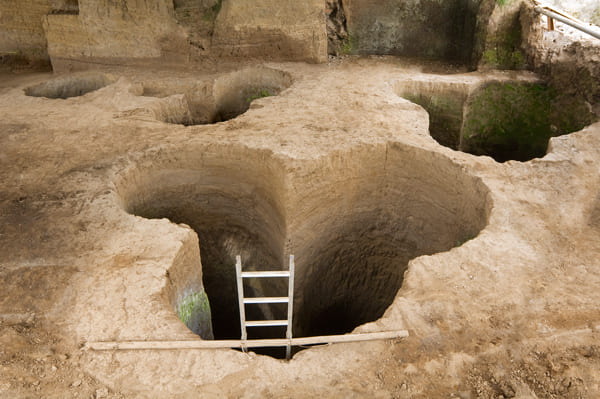
It exposes pre-inca tombs and pottery offerings, found 15 meters (49.21 feet) depth. The remains date from ancient cultures that show the human presence in the surroundings of Quito. Mummies and remains of the Spondylus shell were found in this place. It is located on the Antonio Costa Street, between Roman and Fernando Corral Streets (in the San Vicente de La Florida Neighborhood). North of Quito.
El museo de sitio se encuentra en la zona del bosque nublado, a menor altura y con un clima más cálido que el de la capital.
